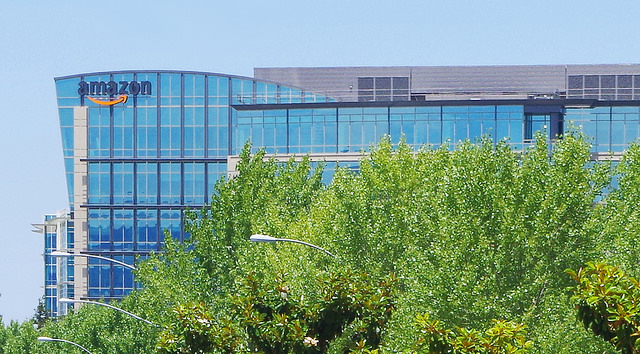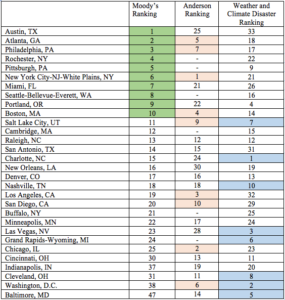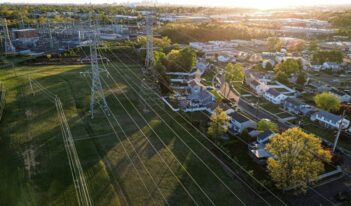
Rankings for company’s new headquarters offer cautionary lessons about using rankings as regulatory tools.
Amazon has recently announced its plans for a second headquarters and is considering locations outside Seattle, where its current headquarters is located. Because Amazon is a high-wage company and its second headquarters is expected to house about 50,000 white-collar employees, its choice of where to locate will have an immense economic impact on the city it selects.
Not surprisingly, cities have stepped forward in a veritable stampede to attract Amazon’s second headquarters. 238 cities have submitted formal proposals to Amazon in response to its request for proposals.
Where should Amazon go? Analysts and news organizations ranging from Moody’s Analytics to the Wall Street Journal have jumped in to offer advice for Amazon on this subject. Some have ranked cities, and others have merely identified their top choices.
All the rankings claim to be using criteria that Amazon’s request has outlined. Yet, their rankings and recommendations do not cohere. This poses a problem. After all, how should Amazon and the 238 cities courting the company interpret these conflicting rankings? We suggest that the ranking confusion provides important insights about the potential problems with a new regulatory approach: information-based regulation.
Regulations are rules or norms that influence the policies or conduct of an actor. Most people probably associate regulations with governmental mandates. But in recent years, scholars have noted the role of private actors in supplying regulatory codes, programs, and certifications. Regulations can also take several forms. Some directly shape policies and outcomes of regulated parties, such as the oft-maligned “command-and-control” environmental policies under the Clean Air Act.
But others may take a subtler route. Instead of directly prescribing technologies or outcomes, some regulations gather information about the conduct of regulated parties and make that information available publicly. The Toxics Release Inventory program falls in this category. The logic is that stakeholders will use this information and put pressure on regulated parties to function in specific ways.
Rating and ranking systems are a specific type of information-based regulation. In these systems, the rater not only collects information but also interprets it in a user-friendly format. This format allows stakeholders to compare along with naming and shaming ranked actors, who face pressure to improve performance to avoid looking bad in relation to their peers. Examples of such rankings include Transparency International’s Corruption Perceptions Index, the World Bank’s Index of Ease of Doing Business, US News’s National University Rankings, and so on.
But rating systems have their problems as well. First, multiple rankings can cause information overload for stakeholders. This problem might not be severe if the rankings overlap. Or, if there is a clear hierarchy among raters, stakeholders could pay attention to only the most authoritative rankings. But what if these rankings do not overlap and there is no authoritative rater?
Second, ranking systems invariably focus on some considerations but ignore others. Because the ranked actors want to “look good” in future rankings, they devote disproportionate resources to the spotlighted dimensions and ignore the other ones. Again, this may not pose a problem if the spotlighted dimensions are indeed the most important ones. But what if they are not?
Rankings for Amazon’s second headquarters suffer from both problems. Multiple rankings do not cohere—as there is no authoritative ranking system—and they also ignore a compelling business issue: vulnerability to extreme weather events and climate change.
We provide a quick analysis of the rankings provided by Moody’s Analytics of 65 locations and Anderson Economic Group of 35 locations. Eight of the top 35 locations in Moody’s list did not even make it to the Anderson list (Rochester, New York; Pittsburgh; Seattle-Bellevue-Everett; Cambridge, Massachusetts; Buffalo, New York; Grand Rapids, Michigan; Oklahoma City; and Virginia Beach-Norfolk-Newport, Virginia). On the other hand, Phoenix, which was Anderson’s 29th location, did not make it to the Moody’s list.
For our statistical analysis, we identified the top 34 overlapping locations in order to calculate correlations between the two rankings. As we might have expected, the two rankings are poorly correlated. We computed Spearman correlations, which range from -1 to +1. A correlation of -1 indicates a perfect negative correlation between two rankings. This means that the two rankings are identical except that their order is reversed: the top-ranked city in one is the lowest-ranked in the other. In contrast, a correlation of +1 indicates a perfect positive correlation, that is, the rankings overlap perfectly.
But what if these rankings are very poorly correlated? In such a case, the correlation would be zero or close to zero. Rankings with a correlation close to zero will cause confusion because the stakeholders will not know what to make of the multiple rankings. Our analysis indicates that the Moody’s and Anderson rankings are very poorly correlated, as they have a correlation that is close zero—0.0623.
The rankings also fail to incorporate extreme weather events and climate change considerations. Rising sea levels, extreme temperatures, drought, and floods would probably make it difficult for the 50,000 projected Amazon employees to function effectively in their new headquarters. To develop a ranking reflecting this risk, we assess how many extreme climate and weather events a city has experienced in the last 25 years. Drawing on data provided by the Federal Emergency Management Agency, we counted days during which a county had a federally declared emergency or disaster. We then matched cities to counties, thereby allowing us to create a weather and climate disaster ranking of cities.
How do Moody’s and Anderson’s rankings correlate with our ranking? As we show in the table below, the three rankings differ substantially. The top 10 locations under each ranking are highlighted in different colors for ease of reference. Notably, they overlap in very few cases. The correlation between Moody’s and weather and climate disaster ranking is -0.0675. We find a similarly low correlation between the Anderson ranking and our weather and climate disaster ranking: -0.0885.

The bottom line is that these rankings do not help either Amazon or the cities that are bidding for the second headquarters. This is surprising because both Moody’s and Anderson claim to be following Amazon’s template.
How can Amazon’s template be interpreted so differently? If information-based regulatory tools are also amenable to such diverse interpretations, can they effectively shape behaviors of the ranked actors? After all, the ranked actors need to hear one coherent message about what is expected of them. These Amazon headquarters ratings fail to send such a message.
It is also surprising that both Moody’s and Andersen ignore extreme weather events and climate change. On one hand, corporate America, including Amazon, claims to be serious about dealing with climate change, notwithstanding the Trump Administration’s hostility to addressing climate issues. Moody’s has even released a strong advisory on how climate change will influence its bond and debt rating for local governments, stating that:
Climate shocks or extreme weather events have sharp, immediate and observable impacts on an issuer’s infrastructure, economy and revenue base, and environment. As such, we factor these impacts into our analysis of an issuer’s economy, fiscal position and capital infrastructure, as well as management’s ability to marshal resources and implement strategies to drive recovery.
But by ignoring climate change in their headquarters rankings, Moody’s and Andersen are creating negative incentives for cities to invest in responsible climate policies. This behavior is quite puzzling considering that Moody’s is currently warning local governments about climate change.
We take away from the city rankings based on Amazon’s criteria an important lesson about the limits of information-based regulation. Rankings can seem exciting as a regulatory strategy, but they raise questions about the conditions under which they can be used effectively.
Justice Louis Brandeis once famously noted that sunlight is the best disinfectant. We agree with this statement but also recognize that more information does not necessarily lead to better decisions, especially if information comes from multiple sources. Furthermore, if information is to serve as an effective disinfectant, it should illuminate all the important dimensions of the problem. Those issues left unilluminated—like climate change, in the case of rankings for Amazon’s new headquarters—are likely to fester and go unaddressed.
The photograph of an Amazon building is used under a Creative Commons license.





